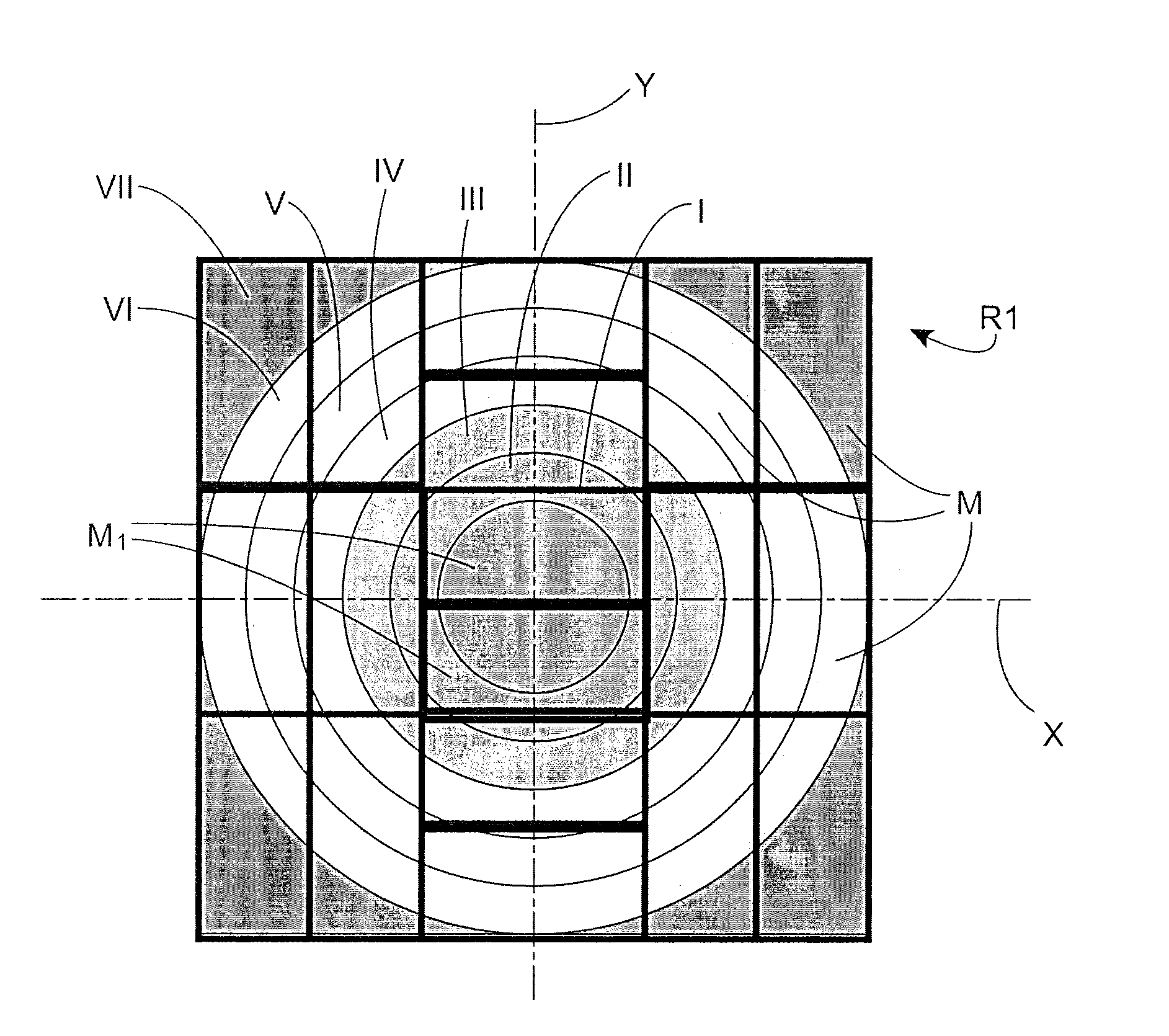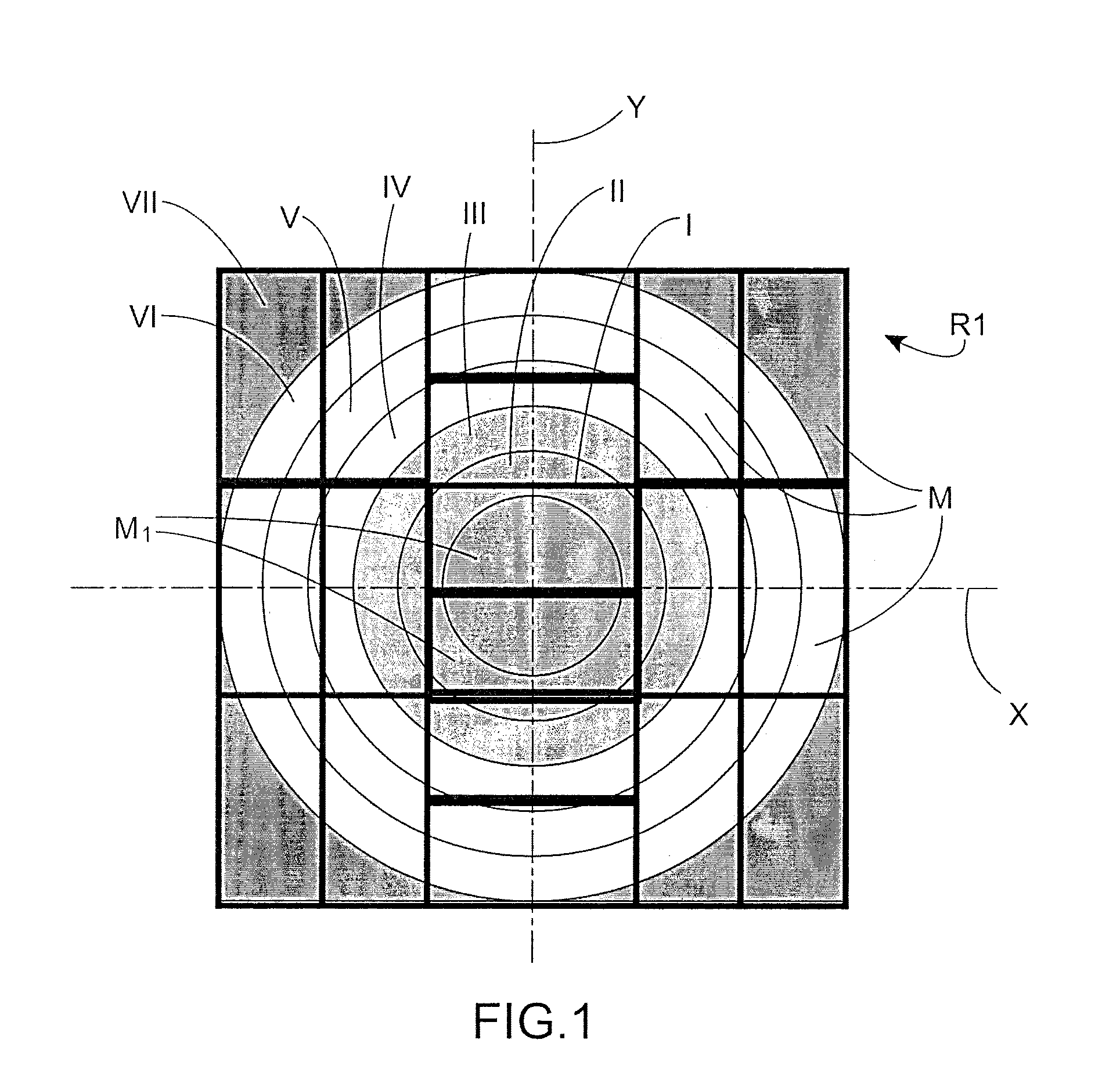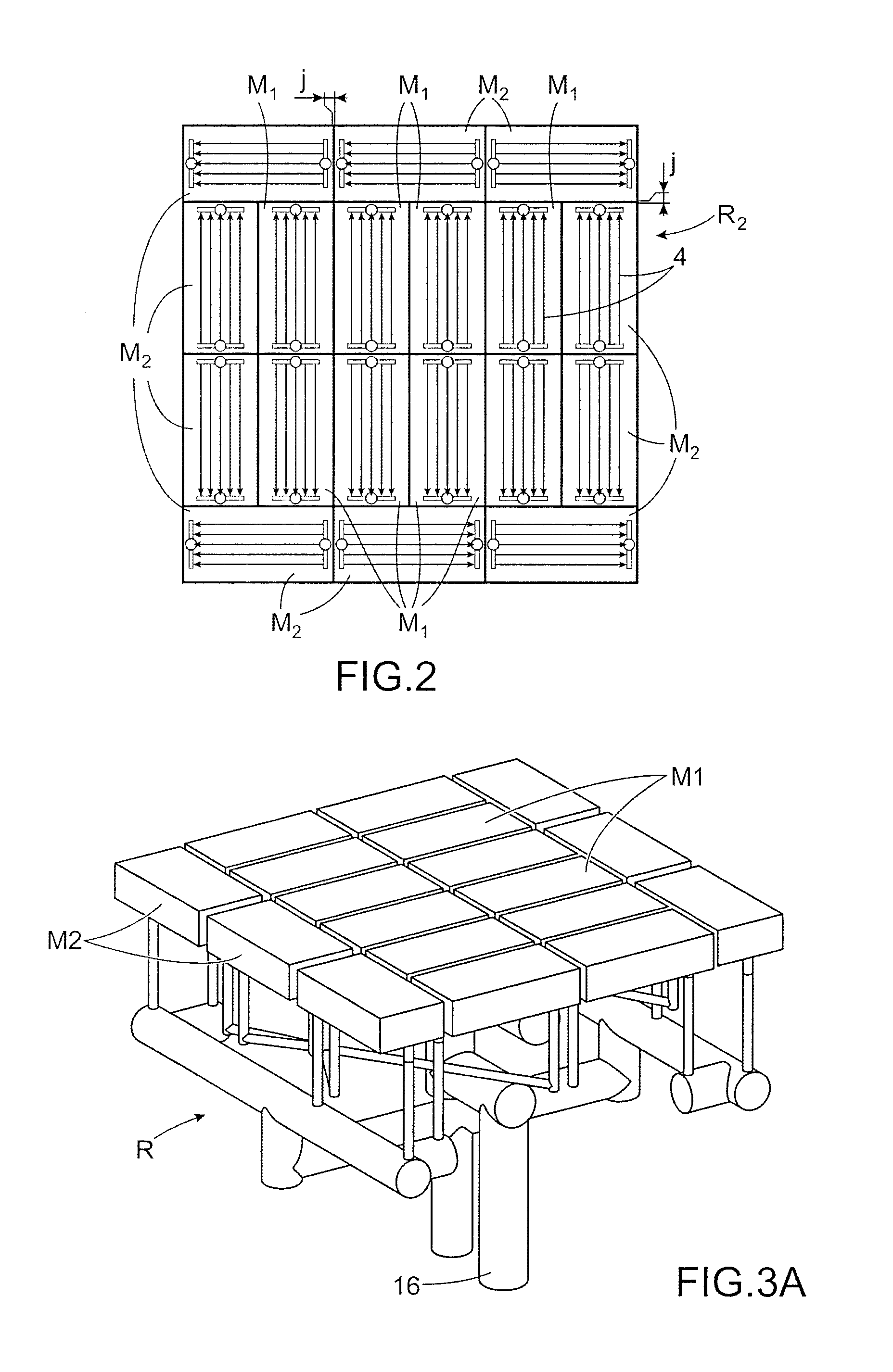Modular solar receiver and solar power plant comprising at least one such receiver
a solar power plant and module technology, applied in the direction of solar heat collectors, solar heat generation using solar heat, lighting and heating apparatus, etc., can solve the problems of tube rupture, solar receivers are subject to very harsh conditions, and temperature differences
- Summary
- Abstract
- Description
- Claims
- Application Information
AI Technical Summary
Benefits of technology
Problems solved by technology
Method used
Image
Examples
Embodiment Construction
[0010]The aim mentioned above is achieved by a solar receiver consisting of a plurality of absorber modules each comprising a specific fluid circuit. The modules form a paving suitable for free expansion of each of the modules. Since the absorber modules have a smaller surface area with respect to an absorber according to the prior art, the surface of each module is subject to a more homogeneous flux. The module circuits are connected to each other.
[0011]Particularly advantageously, the fluid supply of the modules may be adapted according to the flux received. In the case of a module situated in a high-flux area, it may be supplied with cold fluid, and in the case of a module situated in a low-flux area, the module may be supplied with the fluid preheated in the module situated in the high-flux area. The temperature of the entire receiver is more homogeneous and the thermomechanical stress is reduced.
[0012]More generally, due to the modular design, any type of fluid circuit may be e...
PUM
 Login to View More
Login to View More Abstract
Description
Claims
Application Information
 Login to View More
Login to View More - R&D
- Intellectual Property
- Life Sciences
- Materials
- Tech Scout
- Unparalleled Data Quality
- Higher Quality Content
- 60% Fewer Hallucinations
Browse by: Latest US Patents, China's latest patents, Technical Efficacy Thesaurus, Application Domain, Technology Topic, Popular Technical Reports.
© 2025 PatSnap. All rights reserved.Legal|Privacy policy|Modern Slavery Act Transparency Statement|Sitemap|About US| Contact US: help@patsnap.com



